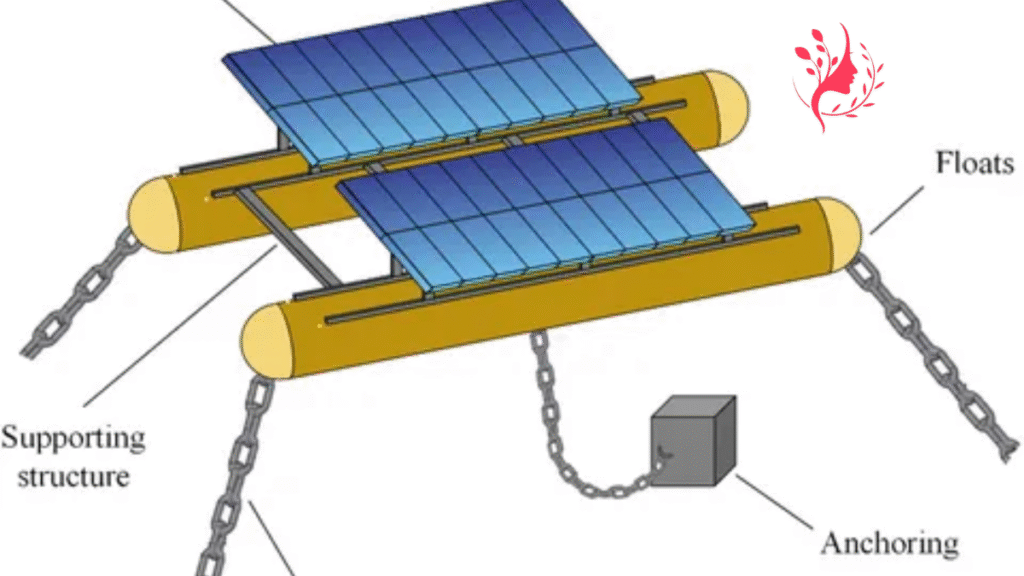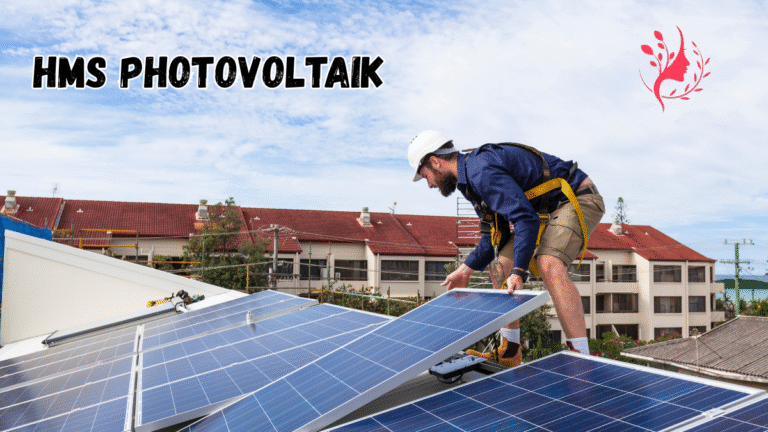Introduction: What is HMS Photovoltaik?
As the world embraces sustainable energy, one name is becoming increasingly prominent in the renewable energy landscape—hms photovoltaik. Blending technological innovation with environmental responsibility, hms photovoltaik is more than just a solar solution; it’s a paradigm shift in how we generate, manage, and think about solar energy.
This article delves deep into what hms photovoltaik really is, why it matters, and how it is revolutionizing the solar energy sector. We’ll explore its unique technology stack, real-world applications, sustainability impact, and market implications—optimized for SEO without compromising informative value.
Understanding the Core: The Technology Behind HMS Photovoltaik
At its heart, hms photovoltaik is a high-efficiency photovoltaic (PV) system enhanced by smart monitoring, hybrid energy capabilities, and modular design. The term “HMS” refers to Hybrid Modular Systems—a proprietary architecture that integrates photovoltaic panels with intelligent software and hardware components.
Key Innovations:
- Hybrid Integration: hms photovoltaik combines solar PV with other renewable sources such as wind or thermal systems.
- Smart Monitoring: Real-time energy tracking, predictive analytics, and AI-based fault detection.
- Modular Design: Systems can be scaled up or down depending on residential, commercial, or industrial needs.
This combination makes hms photovoltaik highly adaptable and future-proof—two qualities that are non-negotiable in the evolving renewable energy market.
Why HMS Photovoltaik Matters Now More Than Ever
In a time when climate change, fossil fuel scarcity, and energy independence are dominating headlines, hms photovoltaik answers a critical call. Governments and private enterprises are racing toward decarbonization, and efficient solar infrastructure is a keystone in that journey.
But what truly sets hms photovoltaik apart is its intelligent energy optimization. The system doesn’t just generate power—it manages it.
- Peak Load Management: Avoids grid overload by storing excess power or redistributing it across the network.
- Dynamic Energy Distribution: Balances power between batteries, grid input/output, and direct consumption.
- Energy Resilience: Continues to supply power during outages through islanding features and backup storage.
These features create an energy environment that is not only green but resilient, intelligent, and self-sustaining.
The Anatomy of an HMS Photovoltaik System
Let’s break down the components that make up an hms photovoltaik system:

1. High-Efficiency PV Panels
Made from monocrystalline silicon, these panels are optimized for maximum sunlight absorption and minimal loss. Anti-reflective coatings and bifacial options further improve yield.
2. Hybrid Inverter
The brains of the system. It converts DC to AC while intelligently deciding whether to store, consume, or export energy.
3. Battery Storage
Depending on scale, lithium-ion or sodium-ion batteries are used. Advanced models support second-life EV batteries for circular economy applications.
4. Energy Management Software
Often cloud-based, this software monitors, predicts, and adjusts energy flow automatically, based on weather patterns, usage habits, and utility rates.
5. IoT Integration
Smart sensors across the system monitor temperature, panel angle, shading, and system health, allowing predictive maintenance and optimization.
Real-World Applications of HMS Photovoltaik
The beauty of hms photovoltaik lies in its flexibility. It’s not confined to any one domain.
Residential
- Smart homes integrate hms photovoltaik with EV charging stations, home automation, and smart appliances.
- Homeowners can monitor usage in real-time via mobile apps and receive alerts on optimal consumption times.
Commercial
- Businesses reduce operating costs by using rooftop installations and selling excess energy back to the grid.
- Retail centers leverage the modularity to scale with energy demands seasonally.
Industrial
- Factories and warehouses benefit from uninterrupted operations with battery backups and off-grid capabilities.
- Energy-intensive industries use hybrid systems to balance renewable input with legacy systems.
Off-Grid & Remote Locations
- Ideal for telecom towers, islands, and rural areas, hms photovoltaik brings energy independence where grid extension is economically unfeasible.
How HMS Photovoltaik Enhances Sustainability
Solar energy is clean by nature, but hms photovoltaik takes sustainability a step further:
- Recyclable Components: Panels and batteries designed for end-of-life disassembly.
- Eco-friendly Manufacturing: Reduced carbon footprint during production via green factory protocols.
- Lifecycle Tracking: Digital twins of every component allow cradle-to-grave monitoring for improved circularity.
Moreover, by supporting second-life battery integration, hms photovoltaik contributes to reducing electronic waste—a rising concern in the green tech industry.
Economic Impacts of HMS Photovoltaik
Deploying hms photovoltaik is not just an environmental move—it’s an economic strategy.
Cost Savings
- Net Metering: Sell unused electricity to the grid.
- Tariff Optimization: Aligns energy consumption with lower-rate time windows.
- Maintenance Savings: Predictive software reduces downtime and prolongs system life.
Job Creation
The complexity and scale of hms photovoltaik installations require trained technicians, engineers, data analysts, and software developers, making it a net job creator.
Energy Independence
By minimizing dependence on fossil fuels and foreign energy supplies, countries and companies gain strategic autonomy.
Challenges and Limitations
Even the most advanced technologies face hurdles.
- Initial Cost: Although prices are falling, upfront investment in hms photovoltaik systems can be high.
- Technical Expertise: Advanced systems require skilled personnel for installation and maintenance.
- Grid Compatibility: Older grids may need upgrades to accommodate hybrid photovoltaic solutions.
Still, these are transitional challenges, and the return on investment is often realized within 5-7 years, especially with government incentives.
Regulatory Landscape and Incentives
Governments worldwide are recognizing the potential of systems like hms photovoltaik and responding with favorable policies:
- Tax Credits: Up to 30% in some regions.
- Feed-in Tariffs: Guaranteed payments for feeding electricity into the grid.
- Low-Interest Loans: For households and SMEs adopting renewable systems.
These incentives dramatically improve the affordability and scalability of hms photovoltaik systems.
Competitive Landscape: How HMS Photovoltaik Stands Out
While other players offer solar PV systems, hms photovoltaik maintains a competitive edge through:
- System Intelligence: AI-driven optimization not commonly seen in standard systems.
- Modularity: Allows dynamic scaling without complete system overhaul.
- Open API Integration: Can connect with third-party energy management and home automation systems.
Competitors may offer similar elements, but few integrate them as cohesively as hms photovoltaik.
The Future of HMS Photovoltaik
The road ahead for hms photovoltaik is as bright as the sun it harnesses. Here are the trends shaping its future:
AI-Powered Energy Communities
Imagine a neighborhood where all hms photovoltaik systems talk to each other, trading energy autonomously based on demand and weather. Blockchain and AI make this possible.
Flexible Solar Materials
Researchers are experimenting with organic PV materials and solar fabrics, and hms photovoltaik is poised to integrate them once commercially viable.
Smart Grid Compatibility
With evolving grid infrastructure, systems like hms photovoltaik will play a central role in decentralized energy distribution, where users are both consumers and producers—prosumers.
Conclusion: Is HMS Photovoltaik the Right Choice?
Whether you’re an environmentally conscious homeowner, a business owner seeking energy efficiency, or a policymaker aiming for carbon neutrality, hms photovoltaik presents a compelling case.
Its intelligent, modular, and sustainable design sets it apart from traditional PV systems. It’s not merely about going solar—it’s about going smart, flexible, and future-ready.
In a world increasingly powered by clean energy, hms photovoltaik is not just keeping up—it’s leading.
For more information visite the website
FAQs About HMS Photovoltaik
Q1: Is hms photovoltaik suitable for cold or cloudy regions?
Yes. The system’s high-efficiency panels and smart inverters adjust to low-light conditions, maximizing output even in less sunny environments.
Q2: Can I expand my hms photovoltaik system later?
Absolutely. The modular design allows you to add panels, batteries, or hybrid integrations without redesigning the whole system.
Q3: How does it compare in cost to traditional systems?
While initial costs may be higher due to advanced components, the long-term ROI is superior due to energy savings, incentives, and lower maintenance.
Q4: Is hms photovoltaik compatible with electric vehicles?
Yes. Many setups include EV charging stations, and the system can prioritize charging during optimal solar hours.
Q5: Where can I buy or learn more about hms photovoltaik?
Official distributors and certified installers can be found through industry directories or by contacting the manufacturer directly.

